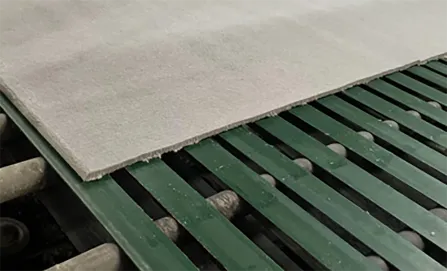Dec . 24, 2024 00:51 Back to list
Exploring Innovative Designs with T-Bar Grid Structures for Modern Architecture
Exploring the Concept of T-Bar Grid Design, Functionality, and Applications
The T-bar grid system is an integral part of modern architecture and interior design, providing both structural support and aesthetic value. This innovative design element consists of a network of T-shaped bars that form a grid, often used in suspended ceilings and a range of other applications. This article delves into the characteristics, benefits, and applications of the T-bar grid system, highlighting its importance in building design and construction.
Understanding T-Bar Grid
A T-bar grid is typically composed of metal or sometimes other materials, arranged in a grid configuration with perpendicular bars resembling the letter T. These grids serve as the backbone for suspended ceiling systems, which are essential in both commercial and residential spaces. The T-bar grid offers a robust framework for attaching ceiling panels or tiles, creating an aesthetically pleasing finish while allowing for easy access to the space above.
The design can vary in terms of dimensions and materials, but typical T-bar grids are made from galvanized steel or aluminum, which ensure durability and resistance to environmental factors such as moisture and corrosion. This sturdiness is vital, particularly in commercial settings where ceilings need to support additional loads, such as lighting fixtures, HVAC systems, and fire suppression systems.
Benefits of T-Bar Grid Systems
1. Accessibility One of the primary advantages of a T-bar grid system is the ease of access to the ceiling space. The modular nature of the grid means that tiles can be easily removed and replaced, allowing for straightforward maintenance of electrical, plumbing, and air conditioning systems without damaging the overall structure.
2. Aesthetic Flexibility T-bar grids come in various styles and finishes, allowing architects and designers to customize spaces to fit specific aesthetics. The system can accommodate various ceiling tile textures, colors, and patterns, providing the flexibility to enhance the visual appeal of any interior.
3. Sound Management Many T-bar grid systems are designed to accommodate acoustic ceiling tiles, which help absorb sound and improve room acoustics. This feature is particularly important in environments such as schools, offices, and healthcare facilities, where noise control is essential for productivity and comfort.
4. Energy Efficiency By integrating energy-efficient lighting fixtures within a T-bar grid system and utilizing insulation materials that fit seamlessly, spaces can benefit from reduced energy consumption. This is increasingly important in modern building design, where sustainability is a priority.
t bar grid

5. Cost-Effectiveness With lower installation and maintenance costs compared to traditional drywall ceilings, T-bar grids present an economically viable option for both new constructions and renovations. Installation is often quicker, reducing labor costs significantly.
Applications of T-Bar Grid Systems
T-bar grids are widely used in various sectors, from commercial buildings to residential homes. Some common applications include
- Office Spaces T-bar grids are prevalent in corporate environments, where they provide a clean, professional look while allowing for easy modification of workspaces and integration of technology.
- Educational Institutions Classrooms and lecture halls benefit from T-bar grid systems that improve acoustics and allow for flexibility in classroom layouts.
- Healthcare Facilities Hospitals and clinics utilize T-bar grids to support advanced lighting and HVAC systems while maintaining sterile environments with easy-to-clean ceiling tiles.
- Retail Spaces Stores and showrooms employ T-bar grids to create attractive displays and effectively manage sound and lighting, enhancing the shopping experience.
- Residential Buildings Homeowners increasingly opt for T-bar grid ceilings in basements, home theaters, and living spaces, valuing their practicality alongside aesthetic appeal.
Conclusion
The T-bar grid system stands as a vital component in the toolkit of modern architecture and interior design. Its combination of accessibility, aesthetic flexibility, sound management, and cost-effectiveness makes it an attractive choice for both new construction and renovations. As the demand for sustainable and versatile design solutions continues to grow, the T-bar grid remains at the forefront of innovative building practices, proving to be not just a functional element, but also a key to enhancing the overall experience of the spaces we inhabit. As we move forward, embracing such systems will undoubtedly contribute to smarter and more efficient architectural designs.
-
Quality Ceiling Trap Doors & Access Panels | Easy & Secure AccessNewsAug.30,2025
-
Durable Ceiling T Grid Systems | Easy InstallationNewsAug.29,2025
-
PVC Gypsum Ceiling: Durable, Laminated Tiles for Modern SpacesNewsAug.28,2025
-
Pvc Gypsum Ceiling Is DurableNewsAug.21,2025
-
Mineral Fiber Board Is DurableNewsAug.21,2025
-
Ceiling Tile Clip Reusable DesignNewsAug.21,2025







